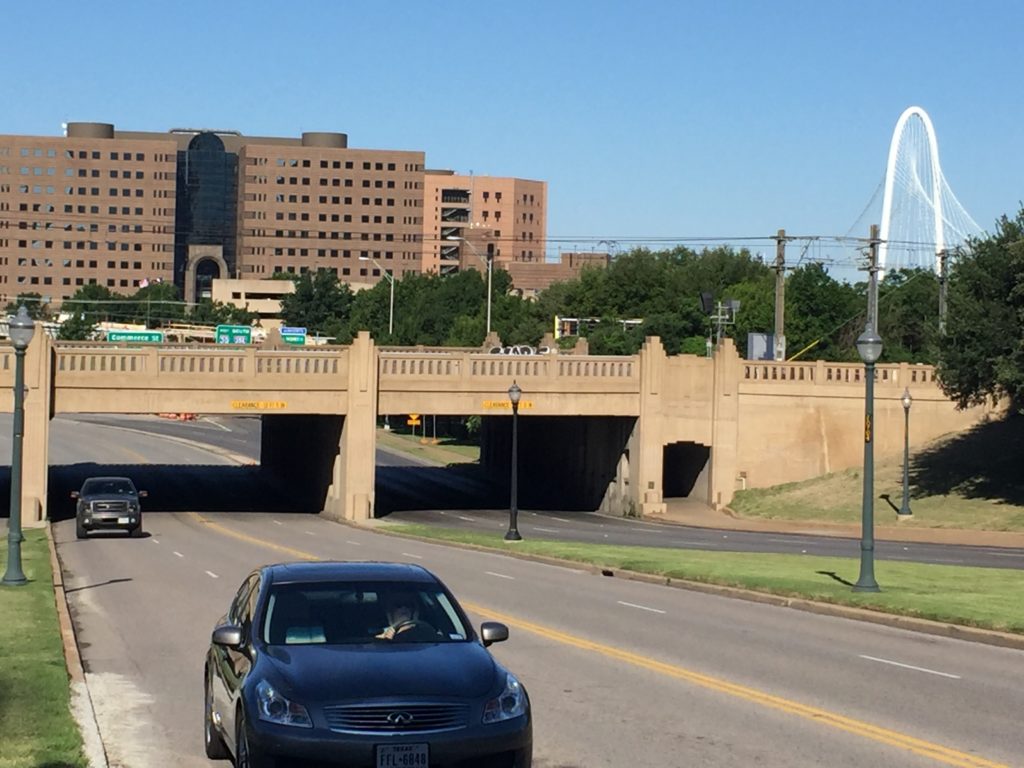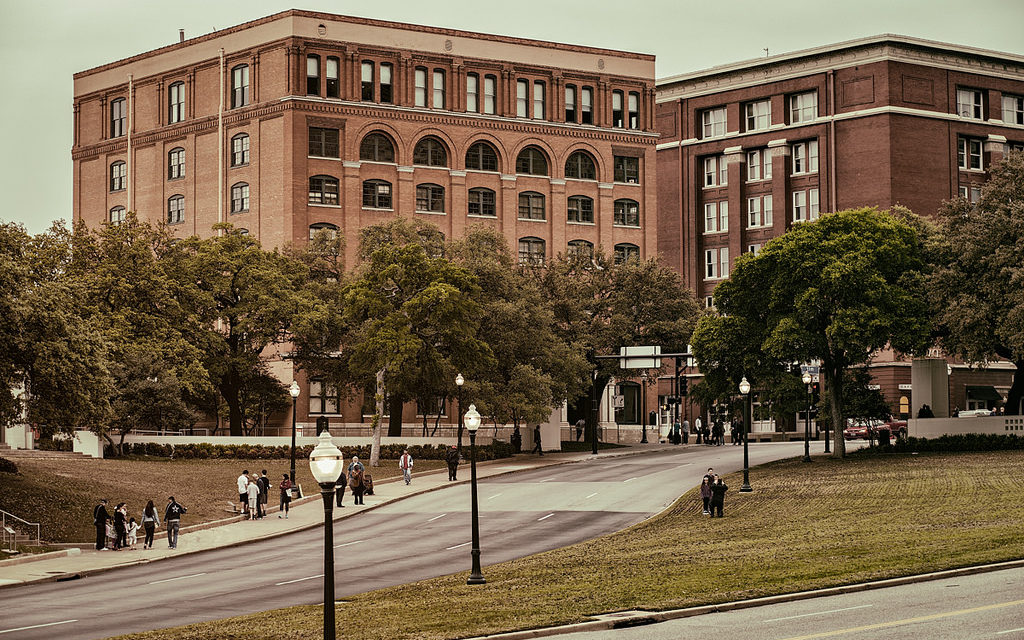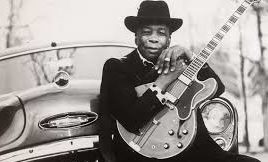Fifty-four years after John F. Kennedy was gunned down in broad daylight next to this patch of green on the fringe of downtown Dallas, the assassination site is instantly recognizable and barely changed, as I discovered on a recent trip to the city.
The Texas School Book Depository, where Lee Harvey Oswald fired the shots that killed Kennedy, is now called the Dallas County Administration Building and no longer has the rooftop Hertz sign and clock that captured the exact time (12:30 p.m. CST) of one of the most infamous events in U.S. history. But the outside of the seven-story, red brick building at the corner of Houston and Elm streets is eerily familiar to anyone who is old enough to remember photos of the crime scene on Nov. 22, 1963.
The concrete plinth that Abraham Zapruder stood on while filming the assassination with his 8mm Bell & Howell camera is still there, though it’s now accompanied by a plaque commemorating his role as the only person to capture the entire assassination on film.

While the old highways signs on Elm Street have been replaced and the lampposts have been moved away from the curb, you can still easily picture the presidential motorcade slowly moving toward the Triple Underpass as three shots echoed in the plaza.

The Grassy Knoll, where conspiracy diehards believe a second gunman fired the fatal shot that blew JFK’s head apart, doesn’t look much different than it did on that sunny Friday afternoon in 1963. The original picket fence is gone, replaced by a similar one, but the parking lot where the second gunman supposedly made his getaway is still there.

All the old buildings around the plaza remain, though the tenants have changed. The Texas School Book Depository now houses county government offices and the Sixth Floor Museum, which chronicles JFK’s presidency, the events leading up to the assassination, the shooting itself and its lasting legacy. Directly across the street in the Dal-Tex Building, where Zapruder’s clothing company had its office, you can shop at a JFK souvenir store. The former Dallas County Courthouse, which looks like a giant sand castle, has been transformed into the Old Red Museum, which tells the history of Dallas. The Criminal Courts Building, which housed the jail where Jack Ruby was held after he shot Oswald, is currently being renovated for use as county offices.

My wife and I walked past all these buildings on a recent tour that included stops at many of the sites closely associated with the assassination. Our guide, Freda, told us her father was a Dallas policeman in 1963 and had a minor role in the drama. She said her dad tried to stop Ruby from entering police headquarters after Oswald was arrested and brought there hours after the shooting, but that Ruby managed to obtain a newspaper credential that allowed him to attend Oswald’s press conference on the night of the assassination. (Film footage shows that Ruby was there.)
Freda and I had some spirited discussions about the assassination. She believes there was a conspiracy; I don’t. (Yes, the Warren Commission report was flawed. And yes, a lot of people had a motive to murder JFK. But there’s still no credible evidence to support any conspiracy, and there’s overwhelming evidence that Oswald acted alone.) Regardless, Freda was a knowledgeable and entertaining guide who showed us these notable assassination-related sites:
Oswald’s boarding house: This is where Oswald was living at the time of the assassination. He and his Russian wife, Marina, were separated and she was living in suburban Irving with a family friend named Ruth Paine. The boarding house, at 1026 North Beckley Ave. in the Oak Cliff section of Dallas, is currently owned by Patricia Hall, a granddaughter of the woman who owned it when Oswald lived there. For a $20 fee, Hall will give you a personal tour of the home and Oswald’s tiny room, which still has the same bed the assassin slept in.

Oswald’s Neely Street apartment: Lee and Marina briefly lived on the second floor of the now-abandoned building at 214 West Neely St. We were able to walk into the backyard, where Marina took the famous photo of Lee holding a rifle and a pair of Marxist newspapers eight months before the assassination. The wooden staircase and white fence seen in the photo are still there, and a copy of the picture is attached to one of the windows, making it a surreal scene.

Texas Theatre: The place where Oswald was captured has survived several closures, a long vacancy and a major fire since 1963. It’s now operating as a movie theater again. The inside has been completely renovated since the assassination and the outside ticket booth, which Oswald snuck past to enter the theater, is no longer used. The theater was closed when we dropped by, but I did take a picture of the marquee, which promoted a special showing of “Goodfellas.’’

Dallas Municipal Building: The beautiful Beaux-Arts structure played a major part in the assassination saga. It’s where Oswald was held in the city jail for two days before being shot to death by Ruby in the basement garage while being transported to the county jail. The building is now being renovated and is scheduled to become the home of the University of North Texas Dallas College of Law. While we couldn’t go inside, we did see the sidewalk entrance that Ruby used to walk into the basement and ambush Oswald.

Dallas Trade Mart & Parkland Hospital: We drove past the Trade Mart where JFK was going to deliver a lunchtime speech – it’s now part of a massive trade show complex – and on to nearby Parkland Hospital, where Kennedy was pronounced dead. The room where he died was demolished during a renovation and a new Parkland Hospital has replaced the old facility. However, there is a JFK display in the lobby of the new hospital.
Tenth Street and Patton Avenue: It was near this intersection that Oswald shot and killed Dallas policeman J.D. Tippit after the officer stopped to question him. A historical marker was finally placed across the street from the site in 2012. It’s right next to some tennis courts and across from a new high school.






Good luck, interesting post, we remember it well. Suzy